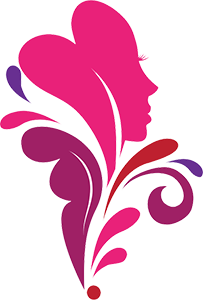Rachel Weisz has consistently captivated audiences and fashion critics alike, and her recent appearance at Paris Fashion Week is a testament to the radiant glow she carries after years in the public eye. This article seeks to explore the foundational elements of Weisz’s fitness philosophy, contrasting her approach with that of her husband, Daniel Craig, and revealing the benefits of her chosen routine that emphasizes moderation and balance.
Rachel Weisz, well-known for her roles in iconic films such as *The Mummy* and *Definitely, Maybe*, continues to redefine beauty standards in Hollywood. Her youthful appearance at the age of 53 raises questions about her beauty regimen. Beyond the timeless allure of her fashion choices and makeup artistry, her commitment to a well-rounded fitness routine plays an essential role in maintaining her vitality. Weisz has been candid about her contrasting approach to physical fitness compared to her husband, Daniel Craig, highlighting the differences in how each of them cultivates their physical identity.
Where Craig has immersed himself in rigorous workouts tailored for his portrayal of the iconic James Bond character—intensive regimes supervised by expert trainers—Weisz maintains a more moderate and holistic approach. Her fitness philosophy is rooted in a balanced lifestyle, choosing exercises that align with her body and personal health goals.
At the core of Weisz’s routine is Pilates, which she has embraced since the birth of her son, Henry, in 2006. Unlike many who feel pressured to return to high-intensity workouts after childbirth, Weisz chose a path that favored low-impact exercises that nurture both physical recovery and emotional well-being. Fitness expert Nancy Best emphasizes the myriad benefits of Pilates for new mothers. It focuses on controlled movements, promoting strength without the risks associated with excessive cardio or heavy lifting.
Pilates not only aids in building core strength but also supports the pelvic floor and improves postural alignment—elements particularly important for new mothers. This method bolsters a safe approach to fitness, one that allows women to heal and regain their strength gradually, rather than rushing to conform to societal pressures.
A notable point of discussion around fitness—especially among women—is the misconception associated with strength training. Weisz has expressed concern over the perception that lifting weights will lead to excessive muscle growth, stating, “If I lifted weights, I’d get huge.” However, Nancy Best clarifies that this fear is largely unfounded.
Achieving a “bulky” appearance through strength training requires significant calorie intake and specialized programs, often geared towards bodybuilding. Best asserts that the percentage of testosterone in women compared to men is considerably lower, making it challenging for women to develop large, bulky muscles. In fact, strength training is a crucial component for women, promoting bone health and reducing the risk of osteoporosis—an especially critical consideration as they age.
When Rachel Weisz refers to being “naturally muscly,” it raises an interesting conversation surrounding body composition and the visibility of lean muscle. According to Best, this perception often correlates with body fat percentage; a lower body fat percentage enhances the visibility of muscle on the body. However, achieving and maintaining muscle density involves a wealth of factors, including age, nutrition, sleep, and a consistent exercise routine.
Weisz’s preference for “general and moderate” exercise reflects a balanced approach that aligns with her aesthetic values. Best believes this may encompass a blend of Pilates, strength training, and yoga, aimed at fostering agility without the intensity of high-impact workouts like CrossFit. This eclectic mix ultimately cultivates lean muscle while preserving the long, graceful lines many associate with classic beauty.
Rachel Weisz serves as an inspiring figure in modern health and beauty discourse. Her unique fitness philosophy emphasizes the concept of balance over intensity, celebrating moderation in physical activity. By prioritizing Pilates and a well-rounded regime tailored to her lifestyle, she challenges the traditional norms often glorified in Hollywood. Weisz’s approach underscores a vital message: fitness is less about conforming to societal ideals and more about personal health and well-being. In a world rife with pressures, her commitment to embracing her natural form and focusing on holistic strength is a refreshing reminder that true beauty shines from within.

